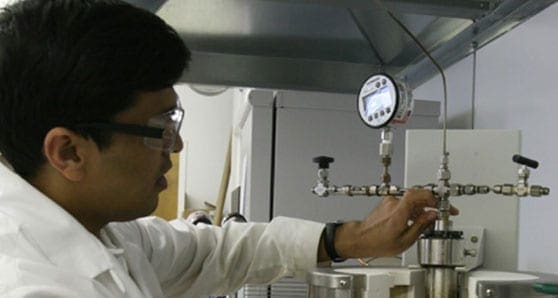 Canadian companies spent $1.5 billion on energy-related in-house research and development (R&D) in 2017, says Statistics Canada.
Canadian companies spent $1.5 billion on energy-related in-house research and development (R&D) in 2017, says Statistics Canada.
That accounted for 8.3 per cent of the total in-house R&D expenditure in Canada, but was still down 4.6 per cent from 2016.
Energy-related areas of technology include fossil fuels, renewable energy sources, nuclear fission and fusion, electric power, hydrogen and fuel cells, energy efficiency, and other energy-related technologies, explained the federal agency on Monday in releasing the data.
“Fossil fuel technologies continued their four-year trend as the main driver of energy-related in-house R&D spending in 2017, accounting for almost half of the money spent. … For the first time since 2014, the total amount spent on in-house R&D related to fossil fuel technologies was relatively unchanged, declining 1.3 per cent to $690 million in 2017. This followed fairly significant declines in 2015 (-29.2 per cent) and 2016 (-26.3 per cent) that coincided with a downturn in oil prices,” said StatsCan.
“Expenditures on R&D activities are generally considered an indicator of economic change, as they can be downsized or scaled up as economic downturns or expansions occur. R&D spending on fossil fuel technologies has shifted toward outsourcing Since 2015, firms conducting R&D activities related to fossil fuel technologies have been transitioning their R&D investments from in-house programs to the outsourcing of R&D activities. Expenditures on outsourced R&D activities related to fossil fuel technologies have more than doubled from their level in 2015, to $184 million in 2017.”
It said the majority of in-house R&D spending related to fossil fuels by businesses in Canada continued to be focused on oil sands technologies, accounting for more than 50 per cent of in-house expenditures in this area in 2017.
“In-house R&D activities in the areas of crude oil and natural gas exploration technology, and of refining, processing and upgrading of fossil fuel technologies have almost doubled cumulatively in 2017 from their 2016 level,” added StatsCan.
“In 2017, companies decreased their in-house R&D spending related to energy efficiency for the first time since 2014, falling from a record high $290 million in 2016 to $211 million. These expenditures on R&D accounted for 13.6 per cent of total in-house energy-related R&D spending, down from 17.9% in 2016. The number of firms performing and funding in-house R&D activities related to energy efficiency technologies has been increasing over the four year period covered by this series, despite the recent decline observed in R&D expenditures on these technologies.
“In 2017, foreign-controlled firms reduced their funding of energy-related in-house R&D programs by 26.8 per cent to $295 million. These companies also reduced their spending on outsourced energy-related R&D activities by 77.1 per cent, to $35 million. These decreases mirror the exit of foreign investment in the Canadian fossil fuel industry observed for this time period.”
Mario Toneguzzi is a Troy Media business reporter based in Calgary.
The views, opinions and positions expressed by columnists and contributors are the author’s alone. They do not inherently or expressly reflect the views, opinions and/or positions of our publication.

